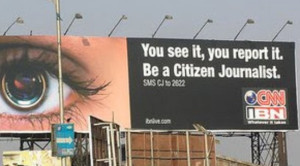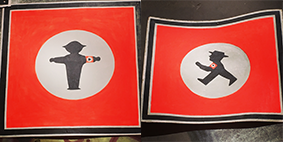 How traditional video-journalism is changing its language, codes, techniques and platforms as a result of citizen journalism.
How traditional video-journalism is changing its language, codes, techniques and platforms as a result of citizen journalism.
Citizen, open source journalism is bringing a wide range of new opportunities into the everyday lives of ordinary people.
The interactive nature of New Media has given a great number of people the chance to collaborate and express their viewpoint, allowing for their direct and democratic participation in the exchange of news and ideas.
Current TV, YouReporter, self-made videos posted on the Internet during the Arab Spring or unexpected natural events around the world, are just some examples of the new possibilities given by the Internet to create, upload and share self-made journalistic contents.
In this respect, open source journalism has had an unprecedented impact on the way we all communicate and decode items of news, and a great impact on the way traditional video journalists communicate and construct their own items of news.
Although traditional media continue to consider themselves the primary and most reliable source of information, they no longer succeed in delivering the most updated, detailed and full-cover news.
Despite their mono-directional type of communication (source versus audience), in the past decade these media have had to come to terms with the fact that such news were lacking a fundamental ingredient: validation from the people.
“News intended as a lesson are giving place to news intended as a conversation” ( Tom Curley, director of Associated Press, in his opening speech at the Online News Association conference in 2004).
This course aims to analyse and explore the different languages, codes, communication techniques and fruition platforms of both traditional and New media, particularly exploring how broadcast audio-visual journalism has changed as a result of more interactive forms of communication, typical of the Internet.
Among our Citizen Journalism projects:
Video-storytelling – Come raccontare con il video la Milano del dopo-Expo
Free course offered by Perypezye Urbane to unemployed young people and temporary workers living in Milan. The course aims at developing basic filming and storytelling skills in the context of the post-Expo 2015 urban environment. The course is organized within the framework of the MI-Generation Lab project promoted by the City of Milan and a network of 18 partners.
“How video can empower our training skills“ – Citizen Jounalism (for not-Italian participants)
Perypezye Urbane invites Educators and Artists to take part in the course led by videomaker Cinzia Espis. It is only for not-Italian participants. The course is organized within the framework of Grundtvig programme, in-service training, and it is possible to apply for a grant: course’s fee, travel and accommodation will be completely covered!
“Learning week” – Citizen Journalism (for public schools in collaboration with Regione Lombardia)
Le attività educational di Perypezye Urbane proseguono con la Learning Week dedicata al video-giornalismo partecipativo rivolta agli studenti di scuole medie e superiori e tenuto da Mattia Vedani.
Ti interessa partecipare a un corso di citizen journalism? Scrivi a info@perypezyeurbane.org.
“MI-giro” – Citizen Journalism (for Milan-based private associations and NGOs)
L’idea progettuale di “Mi-giro” nasce dall’esigenza di girare un video per Milano dal punto di vista dei giovani: documentare, tramite l’uso della videocamera dello smartphone, realtà e/o luoghi già esistenti dei quartieri di Milano, di incontro per minori e giovani, che si propongano come ambiti di relazioni interpersonali e di comunicazione dove loro sono i diretti protagonisti.
Ti interessa attivare un corso di citizen journalism nella tua struttura? Scrivi a info@perypezyeurbane.org.






